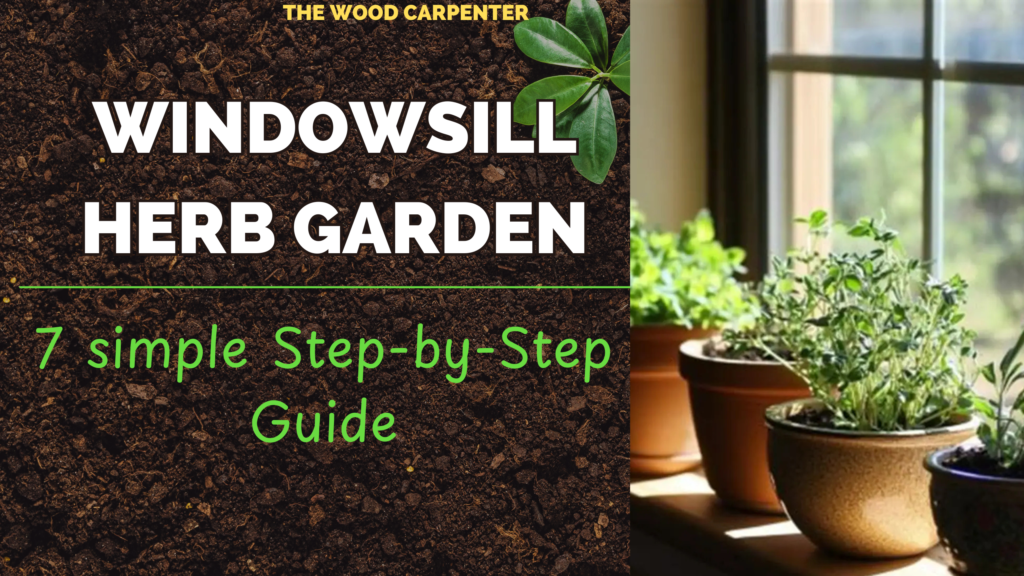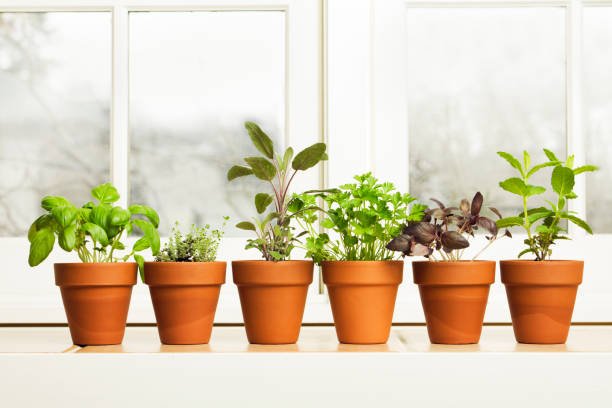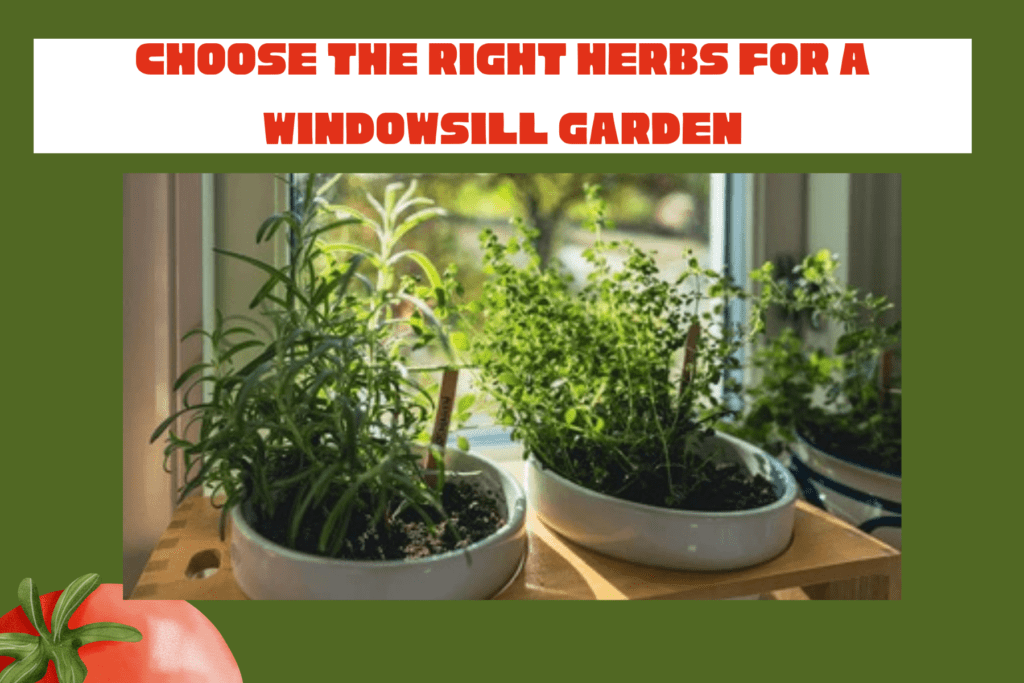
Have you ever dreamed of snipping fresh basil for pasta or plucking mint leaves for your evening tea—without stepping outside? And a windowsill herb garden can make that narrow band of sunlight over your sink, to feel like a mini paradise of fragrance, flavor and greenery.
And there’s another great thing: it doesn’t require a backyard or fancy equipment. Only a few pots, some nice soil, and a spot in the sunshine near the window.
Here’s what I have learned: Whether you live in a small flat that smells of incense; or in London, amid post-industrial haze and art deco buildings; or somewhere warm and suburban, with postage-stamp lawn — if you give your windowsill an ounce of care, it can be turned into something close to a garden.
We’ll now get into everything you need to know, step by step, to grow herbs directly in your place.
🌞 Why a Windowsill Garden?
I remember well my first attempt at growing basil on a windowsill in the kitchen. It was a first step that quickly turned into an obsession.
Watching little green shoots stretch out each morning was therapy — and the scent of that when I brushed by those leaves? Pure joy.
A windowsill herb garden is perfect because:
- It fits even in tiny spaces.
- It keeps herbs within arm’s reach while cooking.
- It’s budget-friendly and easy to maintain.
- It’s a little bit of nature, and peace, pulled indoors.
Plus, there’s something deeply satisfying about growing the very ingredients you use in your kitchen.
🪴 Step 1: Pick the Perfect Spot
Your herbs are sun-lovers. Ideally they want the sun shining over them for 4–6 hours a day. A south-facing or west-facing window is best, but even an east-facing one with strong morning light can work. And if your kitchen gets limited natural light, fear not — LED grow lights can replicate sunlight very well. And the aim is consistent warmth, not blistering heat.
Pro Tip:
Rotate your pots every few days. This allows for more even growth of the herbs (instead of everything leaning toward the window).
🪵 Step 2: Choose the Right Containers
Not all pots are created equal. Herbs need containers that are at least 6 inches deep, with drainage holes to prevent soggy roots.

You can use:
- Classic terracotta pots for breathability.
- Cedar or steel planters, for longevity.
- Even upcycled jars or tins (just drill holes at the bottom).
If you love mixing aesthetics with function, line up a few matching pots on a narrow windowsill tray—it looks neat and helps catch excess water.
🌱 Step 3: The Secret to Healthy Soil
Most herbs aren’t fussy, but they appreciate well-drained soil.
A great mix is:
- 1 part compost (for nutrients)
- 1 part topsoil (for structure)
- 1 part coarse sand or perlite (for drainage)
This ensures your herbs don’t sit in water and get plenty of oxygen. If you’re buying ready-made soil, look for organic potting mix labeled for herbs or vegetables.
Add a handful of earthworm castings or vermicompost every few weeks for a natural nutrient boost.
🌿 Step 4: Choose the Right Herbs for a Windowsill Garden
Here’s where it gets exciting! You can grow almost any herb indoors, but some handle small spaces and varying light better than others.
🌸 The Easy-Starters:
- Basil – Loves sunlight and warmth. Great for pasta, pesto, and curries.
- Mint (Pudina) – Grows like a champion. Perfect for tea, chutneys, and mocktails.
- Coriander (Cilantro) – A must for Indian kitchens. Fast-growing but prefers cool, moist soil.
- Parsley – Beautiful, bright, and full of vitamin C.
- Thyme & Oregano – Drought-tolerant and hardy—great for Mediterranean dishes.
- Fenugreek (Methi) – Quick to sprout and can be harvested in just 3–4 weeks.
- Tulsi (Holy Basil) – Sacred in Indian homes, aromatic, and full of health benefits.
Each has its own quirks, so you just pair the herbs with similar watering needs together.
For instance, basil and parsley like moisture, while thyme and rosemary prefer a drier soil.
Pro Tip:
Keep mint in its own pot—it tends to take over others!

Also read:
How to Start a Lasagna Garden: The Lazy Gardener’s Guide
How to Build a Pollinator Garden: 8-Step Guide
Maidenhair Fern Plant: Complete Guide to Growing and Caring
💧 Step 5: Watering & Maintenance Made Simple
It’s so tempting to water herbs every day, but they hate “wet feet.”
Instead:
- Check the soil by sticking your finger in about an inch deep.
- If it is dry, then you have to water slowly until it drains from the bottom.
- Empty the saucer after watering , so that the roots don’t sit in water.
In humid places, try to water every 2–3 days on average. During the hot months, you might need to water them more often.
You can also use the self-watering pots, which keep moisture levels steady especially helpful for busy schedules.
✂️ Step 6: Harvest Often (It Helps Them Grow!)
Here’s a fun secret: the more you harvest, the more they grow!
Pinch off the top leaves of basil or parsley regularly to encourage branching and bushier growth.
Never remove more than one-third of the plant at once.
If your herbs start to flower (known as “bolting”), pinch off the buds—flowering can make leaves taste bitter.
Story time:
I once let my coriander bloom because the tiny white flowers looked adorable. Big mistake—the leaves stopped growing and lost flavor. Lesson learned: harvest often!
🧺 Step 7: Replant and Refresh Seasonally
At the end of each growing cycle:
- Remove the dead roots or leaves.
- Add a fresh layer of compost or soil mix.
- Replant or move herbs indoors during extreme heat or rain.
You just do not need to replace all the soil every time you just enrich it. Your herbs will thank you with another lush season of growth.
🌼 Bonus: Add Some Salad Greens
Why stop at herbs? Giving your windowsill planter an extra charge with salad leaves like rocket (arugula), pea shoots or mustard green.
They achieve full size quickly, and are “cut-and-come-again” crops — snip a few whenever you need them. It’s a living salad bar next to your cutting board.
🧊 What to Do with Extra Herbs
Sometimes your herbs grow faster than you can use them (a good problem to have!). Try these preservation tricks:
- Drying: Hang small bunches upside down in a cool, airy spot.
- Freezing: Chop and store in ice cube trays with olive oil or water.
- Homemade sauces: Make herb butter, chutneys, or pesto.
These methods help you enjoy your herbs long after the growing season.
❤️ Why You’ll Love a Windowsill Herb Garden
And for the emotional bonuses — a window sill garden makes your kitchen feel alive and breathing.
The scent of mint that rises out of the earth in your garden first thing in the morning; the way you can see sun through leaves, green and wet. It’s a tiny daily miracle of joy.”
And the satisfaction of cooking with your own harvest? It will be Priceless.
🧠 FAQs About Windowsill Herb Gardens
1. Can I grow herbs without sunlight?
Yes, but you can do this with the help of the grow lights. Herbs like basil and parsley thrive under LED lights that mimic sunlight.
2. How often should I fertilize herbs?
Use a light organic fertilizer every 2 to 3 weeks. Make sure you feed them lightly, if you feed them heavily it may result in plants that are weak and leggy.
3. Can I plant multiple herbs in one pot?
Yes, but group the herbs with similar water and sunlight needs. Rosemary, thyme and oregano will make good companions.
4. Why are my herbs turning yellow?
Usually this will happen due to over watering or because of the poor drainage. So try to make sure your pots have holes and soil isn’t soggy.
5. What are the easiest herbs for beginners?
Basil, mint, coriander, and parsley are all great for the beginners.
6: What herbs grow best on a windowsill?
Popular choices include basil, mint, parsley, coriander (cilantro), thyme, oregano, chives, rosemary, and tulsi (holy basil). These herbs will adapt well to indoor light and with the limited space provided.
✨ Final Thoughts
A windowsill herb garden is not just growing plants on a ledge but looking after a little green life that gives to you every day of their existence.
It also teaches you patience and they too bring beauty to your home, they transform your cooking with fresh, organic flavors.
So next time when you sip your mint tea or a garnish pasta with homegrown basil, you can take a moment to smile, because you itself created that magic right on your windowsill.

